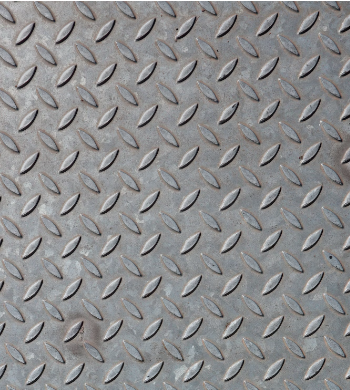
When it comes to managing kitchen waste, particularly fats, oils, and grease (FOG), a grease trap is essential. It's an integral part of waste management systems and a legal requirement for commercial foodservice and catering kitchens, to ensure that sewage systems are protected from clogs and environmental damage. With various materials available for grease traps, it can be challenging to decide which is the most suitable for your needs. In this blog post, we'll explore the materials used in grease traps and discuss which is the best option.
What Materials are Used in Grease Traps?
Grease traps are typically constructed from metals, such as stainless steel and epoxy-coated steel, or plastics like PVC or polypropylene. Each material offers unique benefits and potential drawbacks depending on the specific application and location of the grease trap.
Metal Grease Traps
Metals are widely used for their strength and durability. Let's take a closer look at the types of metal commonly used in grease traps.
Stainless Steel
Stainless steel is one of the most popular materials for grease traps, especially in commercial settings where heavy-duty use is expected. It is highly resistant to corrosion and can withstand extreme temperatures, which is critical for kitchen environments. Stainless steel grease traps are easy to clean and maintain, which is vital for hygiene in food service areas. They are a popular choice for indoor use, however can also be used outside due to their excellent resistance to weather conditions.
Epoxy Coated Steel
Another option is epoxy-coated steel grease traps, which are essentially a steel construction with a protective epoxy layer sprayed onto the steel base. This coating provides a weatherproof finish and additional resistance to rust and corrosion, which is particularly useful for outdoor grease traps. The epoxy coating can extend the lifespan of the trap and also make it more resistant to the aggressive cleaning chemicals that are sometimes used in maintenance.


Plastic Grease Traps
Plastic grease traps are another popular option, with PVC and polypropylene being the common materials.
PVC
Polyvinyl Chloride, or PVC, is a versatile plastic used in various plumbing applications, including grease traps. It is lighter than metal, making it easier to install, especially in locations where weight is a concern. PVC is a cost-effective solution, however, it is not be as durable as metal when exposed to high temperatures or physical impacts.
Polypropylene
Polypropylene is known for its toughness and flexibility. It is resistant to many chemical solvents, bases, and acids, making it a suitable material for a grease trap that has to handle a variety of waste substances. Polypropylene grease traps are a good choice for indoor use, but like PVC, they are susceptible to damage from high temperatures and sharp impacts.
What is the Best Material for a Grease Trap?
When deciding on the best material for a grease trap, consider the specific needs of the application, including whether the trap is manual/passive or automatic.
Manual/Passive Grease Traps
For manual or passive grease traps, durability and ease of maintenance are paramount. Stainless steel stands out as the superior choice for these requirements, thanks to its robustness and corrosion resistance. It can handle the frequent manual cleaning and the chemicals used, without deteriorating. For indoor use, where exposure to the elements is not a concern, stainless steel is ideal while epoxy-coated steel is often used for external or underground use, offering a balance between performance and cost.
Automatic Grease Traps
Automatic grease traps (AGTs) or GRU's (Grease Removal Units), on the other hand, often come with their own set of specifications for materials. Although typically made of stainless steel for added strength and robustness, there are some cost effective models such as the Grease Guzzle P-A5, that use HDPE plastic. The containers or cassettes used to collect FOG separately from waste water are often made using strong plastics which are easy to remove, sanitise and reattach during cleaning and maintenance. The seals in these units are often made from neoprene or similar materials, offering a tight seal and resistance to oils and greases.


Considerations for Grease Trap Durability
When it comes to durability, stainless steel is generally the most robust option, suitable for both indoor and outdoor installations. Plastic traps, although not as enduring under stress, can still be quite durable and are often selected for their lower cost and easier installation.
In conclusion, the "best" material for a grease trap largely depends on the specific circumstances of its use. Stainless steel is generally the most reliable and durable option, especially for commercial environments and heavy-duty use. For smaller operations or areas where weight is an issue, plastics like PVC and polypropylene offer a more lightweight and cost-effective solution. When it comes to automatic systems, stainless steel is the way to go for longevity and efficiency, while neoprene seals provide the necessary resilience against FOG substances. The majority of grease traps are supplied with some form of warranty. Some such as those from Goslyn, cover stainless steel materials for up to 10 years with 1 year for other parts and materials, although this will vary between brand and manufacturer.
Ultimately, selecting the right material for your grease trap should be a decision made with both practical and economic considerations in mind, ensuring that the trap will function effectively for its intended lifespan.

Leave a Comment
Your email address will not be published. Required fields are marked *